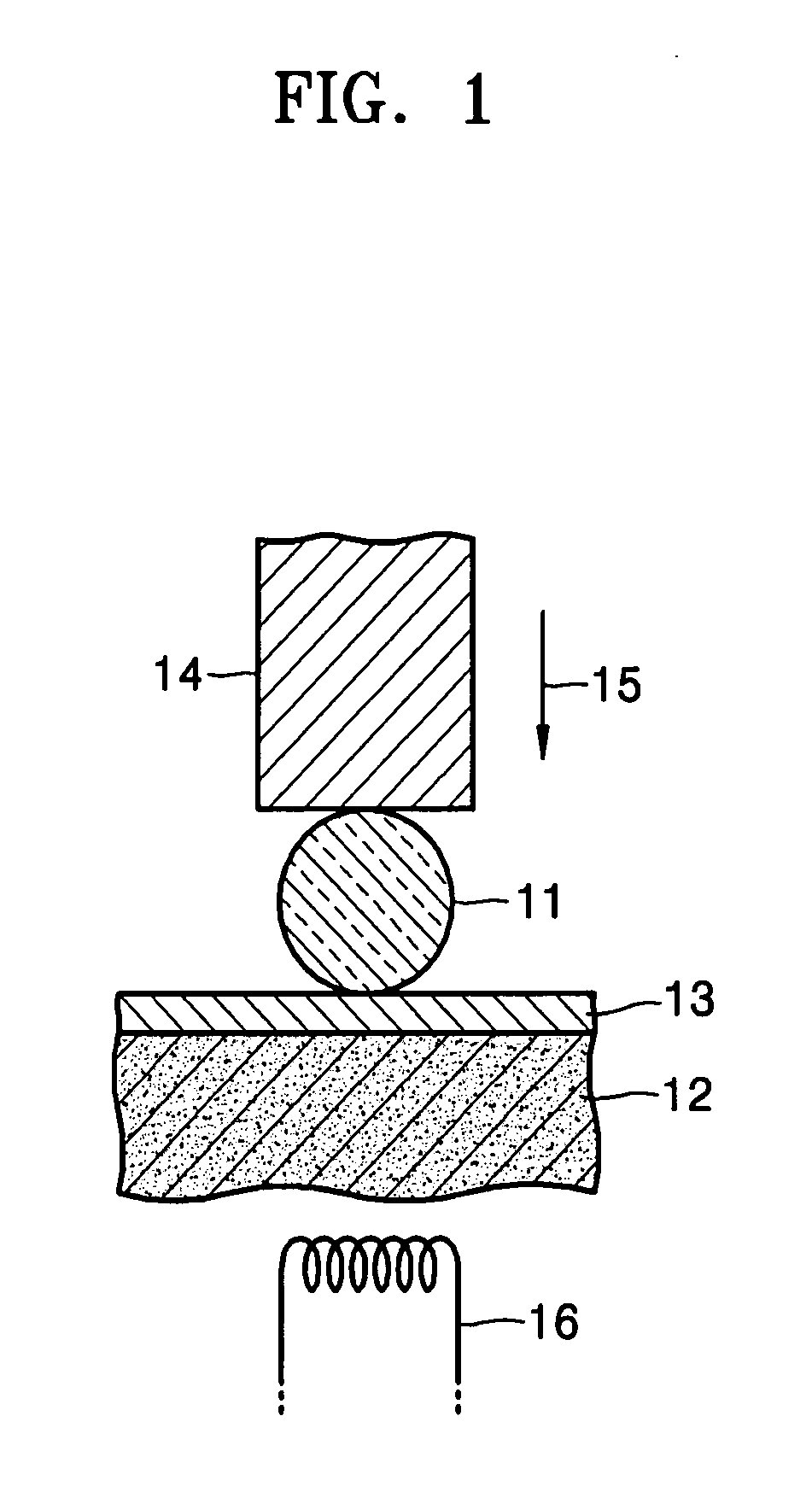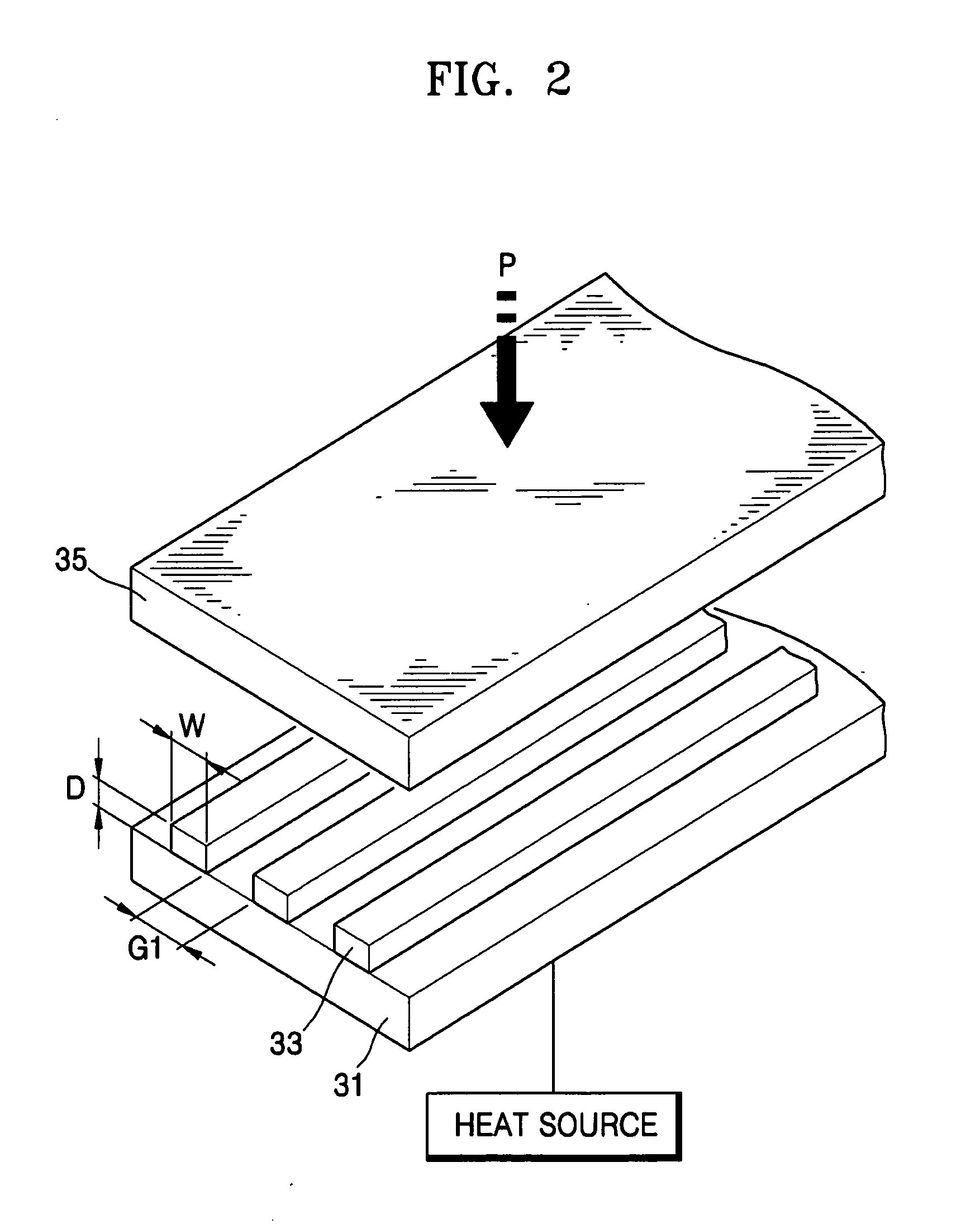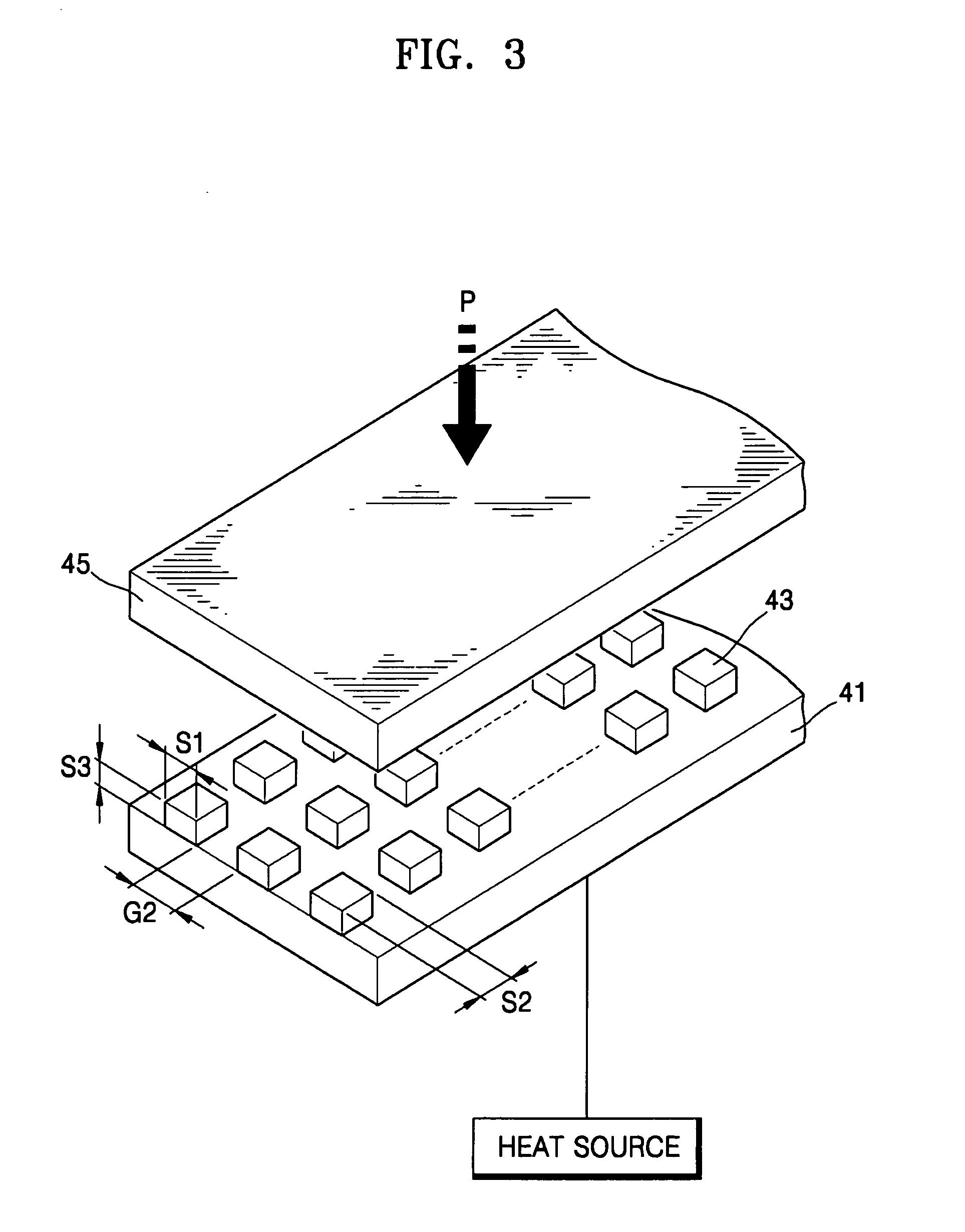Compression bonding method
- Summary
- Abstract
- Description
- Claims
- Application Information
AI Technical Summary
Benefits of technology
Problems solved by technology
Method used
Image
Examples
first embodiment
[0029]FIG. 2 shows the arrangement of a substrate, a metal bonding film, and an element to be bonded having a plate shape, which is hereinafter referred to as a bonded element, in a compression bonding method according to the present invention.
[0030] Referring to FIG. 2, a metal bonding film 33 is patterned in stripes on a top surface of a substrate 31, and then a bonded element 35 having a plate shape is disposed above the metal bonding film 33. Next, the substrate 31 is heated, and simultaneously, the metal bonding film 33 is pressed from above. As a result, the metal bonding film 33 is deformed, and therefore, the bonded element 35 is bonded to the substrate 31. Here, a width “w” and a thickness D of the metal bonding film 33 and a gap G1 between the stripes vary with the types of materials of the substrate 31, the metal bonding film 33, and the bonded element 35.
[0031] The substrate 31 may be made of silicon, metal, or ceramic. The metal bonding film 33 may be made of aluminum ...
third embodiment
[0033]FIG. 4 shows the arrangement of a substrate, metal bonding films, and a bonded element having a plate shape in a compression bonding method according to the present invention.
[0034] Similarly to the metal bonding film 33 shown in FIG. 2, a first metal bonding film 53a is patterned in stripes on a top surface of a substrate 51, and then a second metal bonding film 53b is patterned in stripes on a bottom surface of a bonded element 55. The first and second metal bonding films 53a and 53b are heated by heating the substrate 51 and simultaneously applying pressure on a top surface of the bonded element 55, so that the bonded element 55 is bonded to the substrate 51.
[0035] The third embodiment is different from the first embodiment in that the first and second metal bonding films 53a and 53b are respectively formed on the substrate 51 and the bonded element 55.
[0036] Other features of the substrates 41 and 51, the metal bonding films 43, 53a, and 53b, and the bonded elements 45 a...
PUM
| Property | Measurement | Unit |
|---|---|---|
| Temperature | aaaaa | aaaaa |
| Pressure | aaaaa | aaaaa |
Abstract
Description
Claims
Application Information
 Login to View More
Login to View More - R&D
- Intellectual Property
- Life Sciences
- Materials
- Tech Scout
- Unparalleled Data Quality
- Higher Quality Content
- 60% Fewer Hallucinations
Browse by: Latest US Patents, China's latest patents, Technical Efficacy Thesaurus, Application Domain, Technology Topic, Popular Technical Reports.
© 2025 PatSnap. All rights reserved.Legal|Privacy policy|Modern Slavery Act Transparency Statement|Sitemap|About US| Contact US: help@patsnap.com



